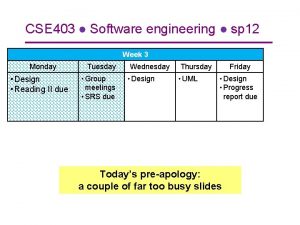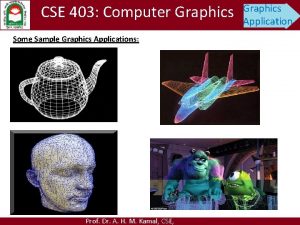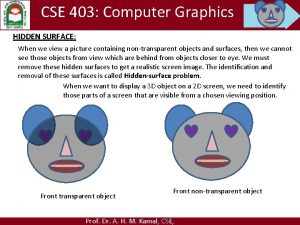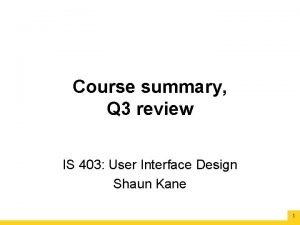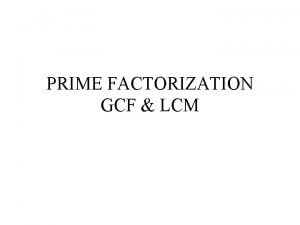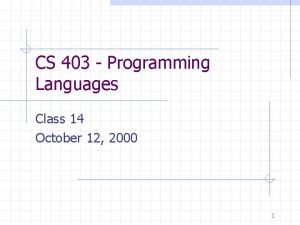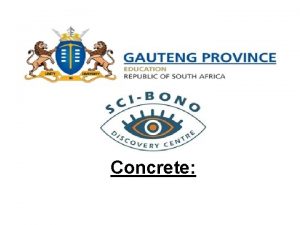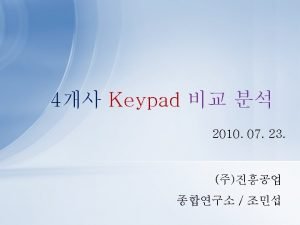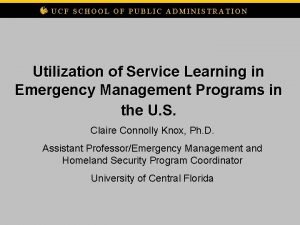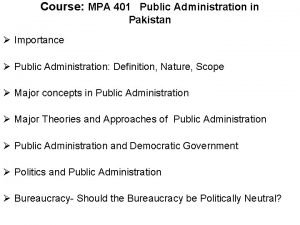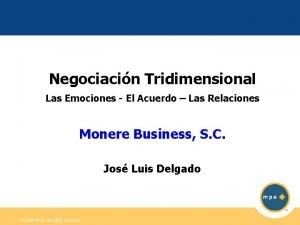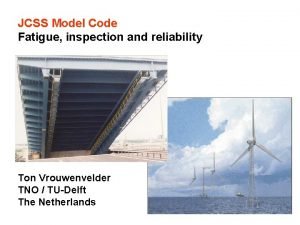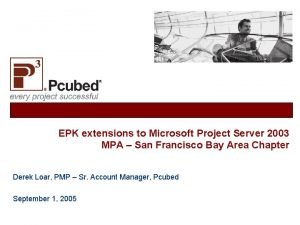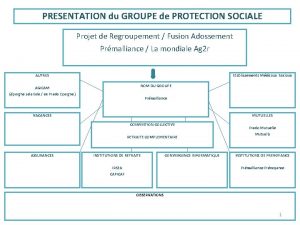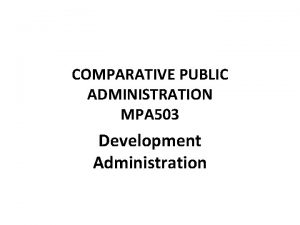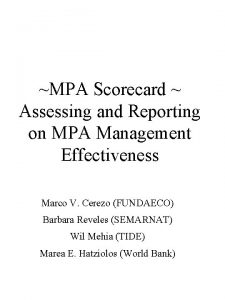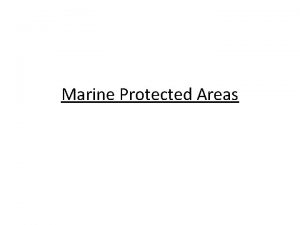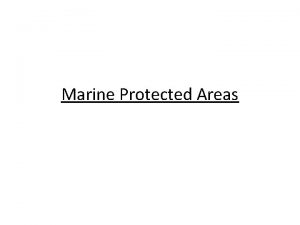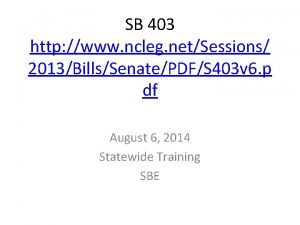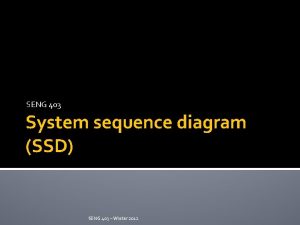1 Development Planning and Administration MPA 403 Lecture

































- Slides: 33

1

Development Planning and Administration MPA – 403 Lecture 17 FACILITATOR Prof. Dr. Mohammad Majid Mahmood Bagram

Reflections 3

Project Monitoring & Evaluation: issues & remedies 4

What is a Project? • A project is a planned undertaking which is a set of interrelated and coordinated activities designed to achieve certain predetermined objectives within a given budget and period of time. 5

Monitoring and Evaluation (M&E) What is monitoring? § Day-to-day follow up of activities during implementation to measure progress and identify deviations § Answers the question, “what are we doing? ” 6

Monitoring and Evaluation (M&E) Why monitor activities? § § Identifies and addresses problems Ensures effective use of resources Ensures quality and learning to improve project activities Strengthens accountability 7

Monitoring and Evaluation (M&E) What is evaluation? § § § Periodic assessment of overall achievement and impacts Systematic way of learning from experience to IMPROVE current activities and promote better planning for future action Answers the question, “what have we achieved and what impact have we made” 8

Monitoring vs. Evaluation (M&E) Monitoring Evaluation Continuous: day-to-day Periodic: important milestones Documents progress In-depth analysis of achievements Focuses on inputs and outputs Focuses on outcomes and impacts Alerts managers to problems Provides managers with strategy and policy options External analysis Self-assessment 9

Why M&E? • • M&E should be part of the design of a project Ensures systematic reporting Communicates results and accountability Measures efficiency and effectiveness Provides information for improved decision making Ensures effective allocation of resources Promotes continuous learning and improvement 10

Where does M&E fit? 11

When Is Evaluation Desirable? • Program evaluation is often used when programs have been functioning for some time. This is called Retrospective Evaluation. • However, evaluation should also be conducted when a new program within a service is being introduced. These are called Prospective Evaluations. • A prospective evaluation identifies ways to increase the impact of a project on clients; it examines and describes a project’s attributes; and, it identifies how to improve delivery mechanisms to be more effective. 12

Prospective vs. Retrospective Evaluation • Prospective Evaluation, determines what ought to happen (and why) • Retrospective Evaluation, determines what actually happened (and why) 13

Evaluation Matrix The broadest and most common classification of evaluation identifies two kinds of evaluation: • Formative evaluation. Evaluation of components and activities of a program other than their outcomes. • Summative evaluation. Evaluation of the degree to which a program has achieved its desired outcomes, and the degree to which any other outcomes (positive or negative) have resulted from the program. 14

Who conducts evaluation? • Internal evaluation (self evaluation), in which people within a program sponsor, conduct and control the evaluation. • External evaluation, in which someone from beyond the program acts as the evaluator and controls the evaluation. 15

issues • Difficulty in precise definition of objectives and goals • Lack of appropriate or adequate data • Inadequate understanding of social and cultural activities • Weak incentives or controls to guide behavior • Political interference • Low managerial capacities 16

issues • Vision: • Leadership: project demands leadership, not merely the funds • Organizational structure: expertise for training, material development, research & evaluation • Consistent policy and approach 17

issues 1. Commitment gap: 2. Organizational Gap: Absence of permanent organizational structure – led to coordination gap 3. Financial Resources Gap: limited financial assistance, and uncertainty about funding 4. Technical Capacity Gap: 18

issues • • • Planning Errors Managing versus Doing Ineffective Communications Time Management Cost/Resource Management Performance Management 19

issues • • • High resistance to change; High cost of travel and communications; Gender disparities in work and benefits; Great exposure to disasters. Low level of participation Do not have a clear and well defined philosophy of development; Organisational centred approach rather than a people-centred approach; Top-down decision making structure; Unproductive competition; Insufficient self-criticism and self-evaluation; Few income or revenue generating initiatives to lessen the dependency on donors; 20

Traditional Approach • Owner defines project needs and hires • Bid documents prepared and bids solicited for low price WHERE IS PERFORMANCE ? ? ? !!! 21

Traditional Approach • • Extensive disputes and litigation Questionable quality Unacceptable accident rates Poor coordination and communication 22

23

A Strategy for Pakistan • A vision: a national framework development • A commitment: political leadership - Ministers, Parliamentarians, and political parties support • Partnerships: joint Federal and Provincial agreements • Guaranteed Financial Resources: Consistent flow of financial resources • Clear Roles and Responsibilities: Clearly spelling out role and responsibilities of Federal Govt. , Provincial Govts. , and District Govts. • A strong Professional base: An Institute or Resource Centre for technical tasks like training, material development, research etc. 24

…Achieving Dreams

…Achieving Dreams 26

…Achieving Dreams 27

…Achieving Dreams 28

…Achieving Dreams 29

Successful Project Management! Having achieved project objectives: – Within time – Within cost – At the desired performance level – Effective & efficient use of resources – Within minimum or mutually agreed scope changes – Within culture and – Accepted by the stakeholders 30

21 st Century Project Manager Elements of Competency • • Talent - basis for performance Knowledge - information necessary to perform Skills - tools to utilize talent & knowledge Experience - understanding how to perform efficiently and effectively • Motivation - ambition to perform successfully 31

Conclusion • Project Monitoring & Evaluation is essential to show that our projects achieve their objectives. • This is why we need to assess the challenges of our system, and to improve it. 32

Thank you for your kind attention! FACILITATOR Prof. Dr. Mohammad Majid Mahmood Bagram 33
 Cse 403
Cse 403 Po 403
Po 403 Voltage classification
Voltage classification Envirobond 403
Envirobond 403 Cse 403
Cse 403 Cse 403
Cse 403 403
403 Quantas prendas as três turmas levaram na primeira semana
Quantas prendas as três turmas levaram na primeira semana 75 lcm
75 lcm Envoy 403b
Envoy 403b Intervalo p-f
Intervalo p-f Cs 403
Cs 403 01:640:244 lecture notes - lecture 15: plat, idah, farad
01:640:244 lecture notes - lecture 15: plat, idah, farad Project planning and management lecture notes ppt
Project planning and management lecture notes ppt Sifat fisik dan mekanik beton
Sifat fisik dan mekanik beton Concrete mixture ratio
Concrete mixture ratio 170 mpa
170 mpa Byu student alumni
Byu student alumni 인장강도 mpa
인장강도 mpa Uncw graduate programs
Uncw graduate programs Ucf school of public administration
Ucf school of public administration Public administration courses in pakistan
Public administration courses in pakistan Cern users office
Cern users office Allianz cern mpa
Allianz cern mpa Allianz cern mpa
Allianz cern mpa Mpa de empatia
Mpa de empatia Logan airport terminal e parking
Logan airport terminal e parking Mohr
Mohr Mpa baseball
Mpa baseball Alaska mpa
Alaska mpa 40 mpa
40 mpa Ms project server 2003
Ms project server 2003 Audiens vacances
Audiens vacances Mpa forum
Mpa forum
